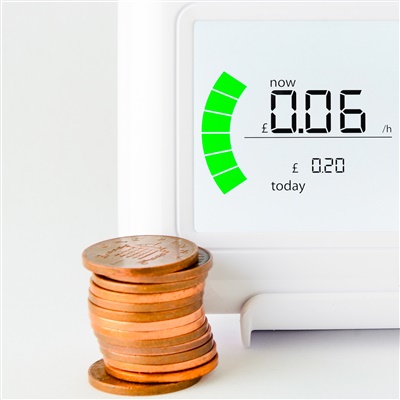SSZTAV3 september 2016 CC1350
With the increasing focus on utilizing less of our world’s resources in our daily lives – water and energy are two important factors that can easily be reduced. Automatic meter reading (AMR) is one of the technologies being introduced to achieve this goal by automatically collecting consumption and status data of resource meters for electrical energy, water and gas.
This technology can save utility providers from travelling to the physical location of the meters to do periodic readouts and it can ensure billing can be based on an almost real-time consumption of resources instead of estimations. With this information it is possible to help both utilities and consumers better control production and usage of resources.

Automated meter reading is currently rolling out across Europe as well as the U.S. Energy Policy Act of 2005 asks utilities to consider support for time-based rates to enabling consumers the ability to manage their energy use – with time most residential and commercial buildings in the modern world will manage resource consumption in an automated fashion.
The MSP432P401x microcontroller (MCU) family introduces high performance analog integration and ultra-low-power consumption on a 32-bit ARM® Cortex®-M4F microcontroller platform. The MSP432™ MCUs come with an integrated 14-bit 1Msps analog-to-digital converter (ADC) that enables more accurate sensing and measurement. Combined with the ARM Cortex-M4F processing capability, this feature makes these low-power MCUs a great companion for gas and flow sensing and measurement. With up to 256kB of Flash, 64kB of SRAM and 84 IOs, the MSP432 MCUs can also serve as a wireless host processor to help run the wireless protocol stack as well as metering algorithms and application.
All the data that is continuously logged by the meter obviously needs to be transmitted to the utility companies for billing and analysis. A number of technologies can be used to achieve this, but the most popular by a large margin is to use radio frequency (RF) technologies to transmit data to a central concentrator, which forwards data from multiple customers over the Internet to the utility’s database. It also allows utility companies to detect anomalies in their network such as tampering and power outages.
RF technologies for communication with utilities typically have three important requirements:
- Ultra-low power consumption – many meters are battery powered and need to have a battery lifetime of up to 10 years.
- Longest possible range – This is desired to minimize the number of gateways / concentrators – infrastructure cost is a significant part of AMR technology.
- Security – Utilities need to make sure the data received are correct and not tampered with.
TI’s SimpleLink™ Sub-1 GHz CC13xx wireless MCUs are a perfect fit for the RF communication needed for automated meter reading. The CC13xx family offers the industry’s lowest power consumption, up to 20 km of line of sight range and hardware-accelerated industry-standard encryption features. Additionally, the CC13xx series already supports wireless M-Bus, a widely used European standard for gas and electricity meters.
In addition to all advantages AMR products has for utility companies, the new SimpleLink dual-band CC1350 wireless MCU also supports Bluetooth® low energy in addition to Sub-1 GHz frequency bands. This enables a whole range of new features to be added to metering applications such as:
- Simple commissioning of new meters by configuring meters using a tablet computer or smartphone.
- Possibilities for wirelessly updates to metering software through applications on customer phones.
When adding Bluetooth low energy to the automated meters, it also allows the consumer to become more aware of their resource usage. It will be possible to push daily updates of gas/water/electricity consumption directly to the consumers’ phone, thus making them focus on reducing unnecessary consumption.
By adding a direct interface directly to the customer “world” it will also be possible to quickly detect and alert both the consumer and utility company of potentially damaging or dangerous situations such as water or gas leaks.
Additional resources:
- Learn more about MSP432 MCUs.
- Check out the new SimpleLink dual-band CC1350 wireless MCU,
- Find out more about TI’s
solutions for the grid:
- Download the water meter reference design guide.
- Get more info on tamper protection in this application note.
- Download the Heat Cost Allocator with wM-Bus at 868 MHz TI design reference design (TIDA-00838).